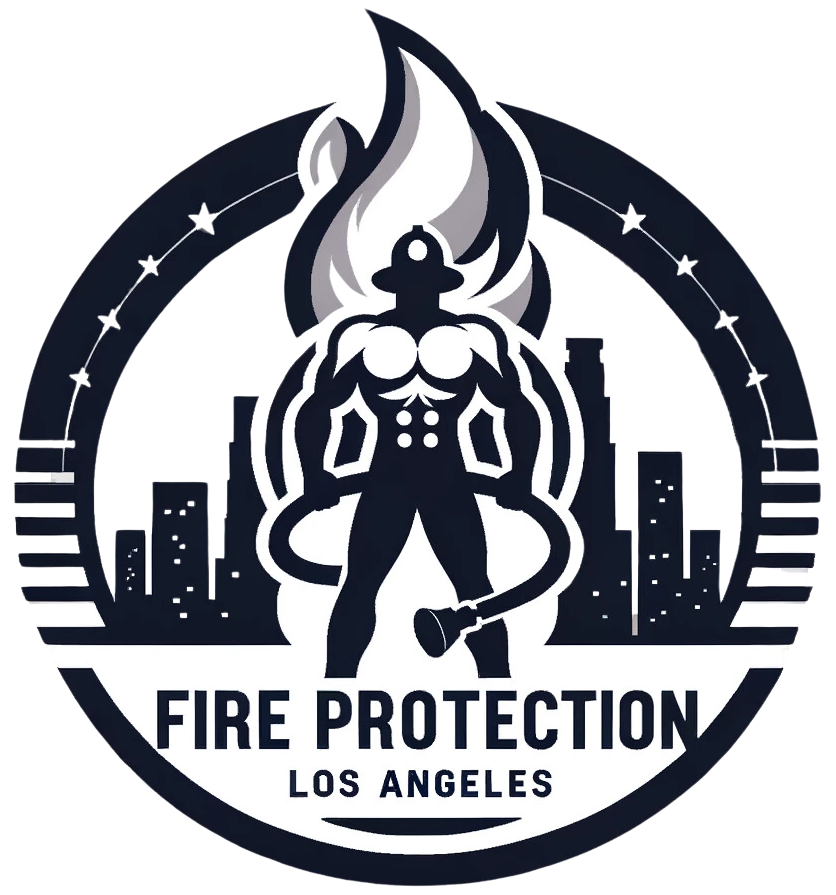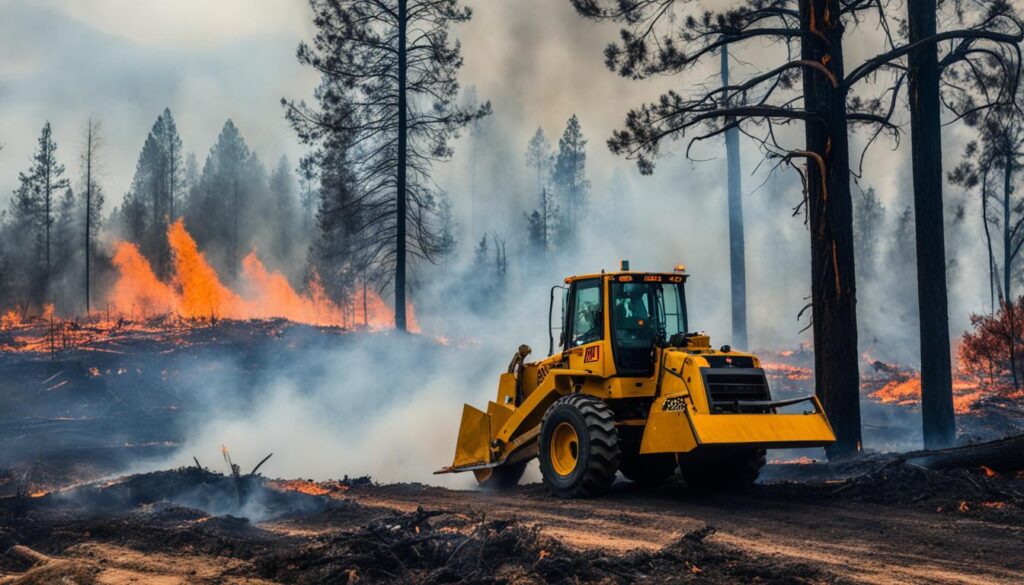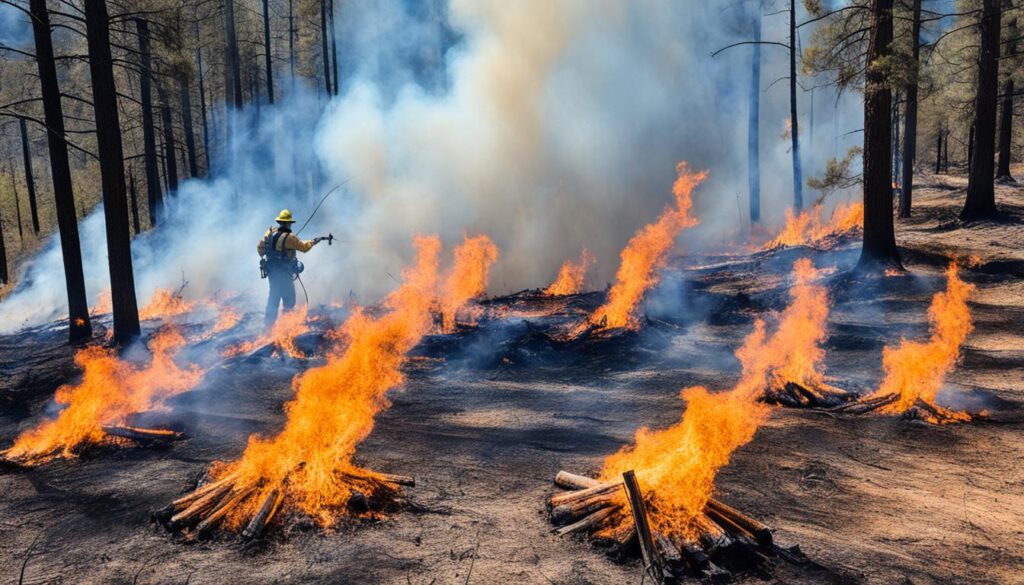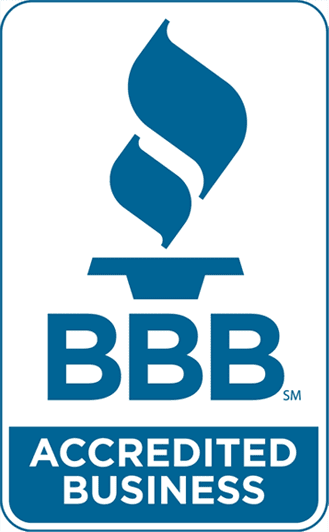Fire can be a guardian for forests. Controlled burns are set to remove underbrush that can make fires worse. These fires help by getting rid of dead leaves and invasive plants. They also help certain trees by letting them release seeds for new growth.
Firebreaks can be wide, up to 3,000 feet, and work with these burns. They are strips of land cleared of flammable plants. This helps stop fires and keeps people and property safe.
Planning for these strategies is key. It involves different types of firebreaks, like waterways or man-made barriers. This careful planning is crucial for stopping fires and protecting what matters.
Keeping firebreaks up requires constant work. This includes using special machines or turning them into roads. It shows how humans and nature can work together. The goal is to be ready for fires and use fire to help the land.
Controlled burns are becoming more common due to past fire suppression efforts. They help keep people safe and protect nature. Firebreaks and controlled burns work together to balance human needs with nature’s health.
Firebreaks are more than just barriers. They show our careful planning and strength. They prove that preventing fires is better than just fighting them after they start.
Understanding the Role of Firebreaks in Wildfire Management
Firebreaks are key in fighting wildfires. They help plan and control burns safely. This makes them a vital part of wildfire safety.
The Fundamentals of Firebreak Construction
Building firebreaks means clearing land and making barriers to stop wildfires. These should be at least twice as wide as the nearby plants. In places like Nebraska, you must have a fire plan approved by the fire chief before burning.
Types of Firebreaks and Their Strategic Uses
- Roads and trails: Often used as firebreaks, made better by removing flammable stuff.
- Water bodies: Rivers and lakes stop fires from spreading.
- Cultivated fields: Clearing these areas can stop a fire in its tracks.
- Man-made firebreaks: Removing plants to make a clear path for fire to stop.
Maintaining Firebreaks for Long-Term Efficacy
Keeping firebreaks working well is key. This means clearing away new plants that could start fires. Using mowers, disks, or herbicides helps keep firebreaks strong.
Groups like Nebraska Environmental Trust help keep these firebreaks ready. By using these strategies, we can fight wildfires better and keep our communities safe.
Key Safety Measures and Best Practices for Controlled Burns
Controlled burns are key for keeping ecosystems healthy and safe from wildfires. They include planning, building firebreaks, and following safety steps. These methods are vital for managing land and preventing big wildfires. Knowing and using best practices makes these burns safer and more successful.
Importance of Prescribed Fire Training
Training on prescribed fires is crucial for stopping wildfires. It teaches people about fire behavior and how to prevent wildfires. Training covers fire dynamics, managing fires, and making firebreaks work well. This training helps experts do controlled burns safely and get the right results.
Maximizing Firebreak Efficacy During Controlled Burns
Building firebreaks is key in controlled burns. Making firebreaks work well needs careful planning from start to finish. This means picking the right firebreak types, keeping them clear, and updating plans as needed. Good management makes firebreaks stop fires from spreading and protect people and nature.
Collaboration with Local Authorities and Firefighting Crews
Working with local groups and firefighters is important for safety in controlled burns. These partnerships help share resources and strategies. They make sure controlled burns are done safely and have backup plans ready if needed.
In conclusion, controlled burns planned and done safely are great for reducing wildfire risks and keeping forests healthy. Training, making firebreaks work well, and working together increase the safety and success of these important fire management steps.
Conclusion
Throughout this article, we’ve seen how firebreaks and controlled burns are key to preventing wildfires. These methods are not just local practices. They are a key part of managing land well over many years. Iowa sees the big benefits of prescribed burns, as the Iowa Department of Natural Resources does. These benefits include stopping wildfires and helping ecosystems.
For safety, we must plan and do controlled burns right. This means more than just starting and stopping fires. It includes smart strategies like making firebreaks and using back burning. It also means working with the community for more help and checks.
Tools like kerosene drip cans, leaf blowers, and yard rakes are cheap but very important. They help make burns safe and work well. Doing prescribed burns every two to six years shows how important they are in stopping wildfires.
Having a good burn plan is very important. This plan should cover everything from the weather to emergency plans. By following best practices and focusing on safety, we can greatly reduce the harm from wildfires. Prescribed burns are risky, but done right, they help prevent wildfires and keep ecosystems healthy.










